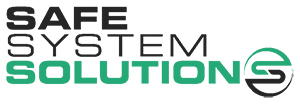There are a variety of vehicle activated systems available to reduce the risk of crashes at intersections. For higher speed intersections there has been considerable trialling and successful deployment of side activated speed limits for the main road. The concept uses vehicle-activated measures to reduce speeds on the major road approaching a priority-controlled intersection. Activation can be triggered by either turning vehicles or by approach speeds on the major road. Activation may provide either a temporarily reduced speed limit or a warning message or both.
Design and implementation considerations:
- Deployment of vehicle activated systems is more easily achieved at intersections with simple layouts and geometry. Multiple lanes in one direction and vertical or horizontal curves or gradients may adversely affect the system operation.
- Systems may be operated in different ways, such as activation only when speed limits are exceeded, or only during certain times of the day.
- Vandalism and power supply issues in remote areas are potential issues.
- Factors affecting the function of a system may include the location of driveways, parking bays, vegetation, and overtaking lanes. These may impede visibility of the sign by a driver or the detection of approaching vehicle speeds by the system.
The effectiveness of the systems has been reported up to a massive 65% Crash Reduction Factor.
